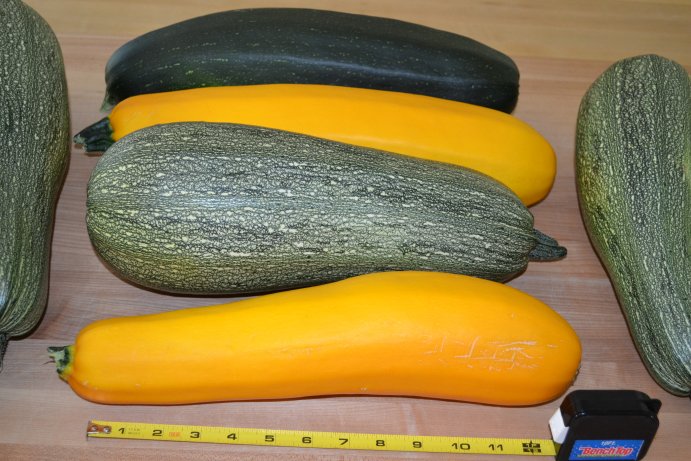This week, Rick and I returned home from teaching out of town to find that many our small, six-inch long zucchini squash had grown to over a foot long! There was quite a bit of heat in our area while we were gone, so we weren’t too surprised, but now we are left with a dilemma – what to do with so many huge summer squash. Here are five ideas:
1. Shred into salad – Simple and one of our all-time favorite ways to enjoy summer squash. Rick especially loves summer squash in his salad.

2. Use in dressing – Summer squash is a great ingredient to help add volume to a salad dressing. For example, we use summer squash to increase the volume of our miso-tahini-lemon dressing which is a great strategy to decrease the fat content per volume of a higher fat dressing.
- Our recipe: Juice of ½ lemon, 2 tablespoons tahini (we like raw tahini), ½ teaspoon chickpea miso, 2 cups chopped summer squash. Blend in blender until smooth.
3. Make spiralized summer squash pasta – Have a pasta party! Here is a blog post with recipes for squash pasta and sauce.

4. Steam them – This helps to soften the toughness of large summer squash skin. We enjoy steaming large summer squash and adding some avocado for consistency and flavor. This recipe reminds me of the steamed summer squash mom used to make when I was young.
5. Share the wealth – We are now in the process of trying 🙂 to share our squash with neighbors and friends. Resoundingly, they have said “hey, thanks for the month supply” (smile) and asked “how can we prepare these?” See 1 – 4 for ideas.
Nutrient analysis of summer squash – all varieties:
| Summer squash – 2 cups chopped (226 g) | Adult Daily Values | |
| Beta carotene | 271 mcg | |
| Vitamin B1 (Thiamin) | 0.11 | 1.1 – 1.2 mg |
| Vitamin B2 (Riboflavin) | 0.32 | 1.1 – 1.3 mg |
| Vitamin B3 (Niacin) | 1.10 | 14 – 16 mg |
| Folate | 65.5 | 400 mcg |
| Calcium | 33.9 | 1,000 – 1,200 mg |
| Magnesium | 38.4 | 310 – 420 mg |
| Potassium | 592.1 | 4,700 mg |
Summer squash may not be a nutrient powerhouse, but it certainly can provide contributory amounts of certain key nutrients, such as the B vitamins listed on the chart above, calcium, magnesium, and potassium.
One of the best ways to keep in touch with us is to join our email list. You’ll receive a free copy of Our Top 12 Strategies for Long Term Success on A Raw Plant-Based Diet eBook along with regular information about raw food and plant-based diets and periodic promotions for our classes, events, and other offerings!

